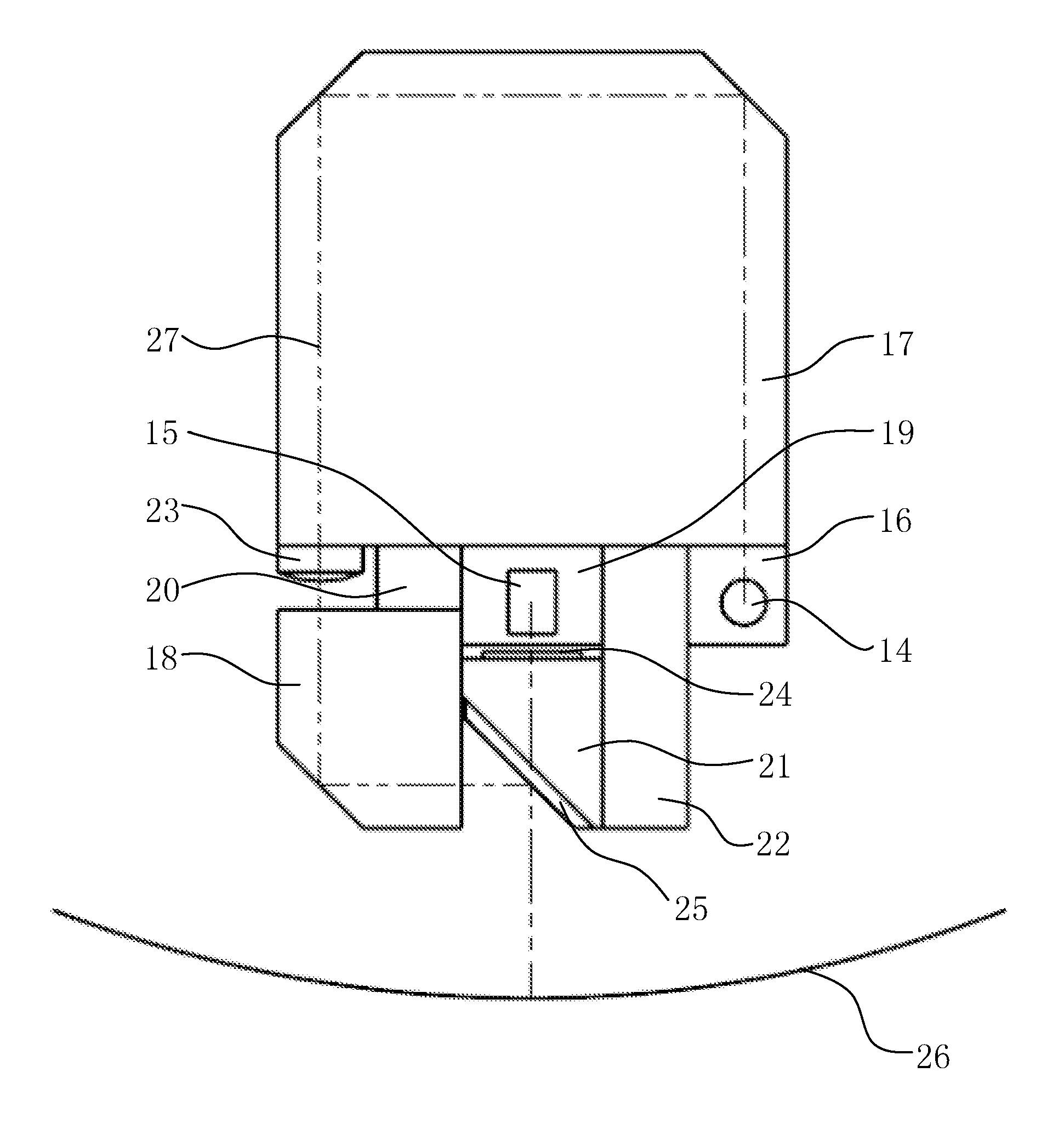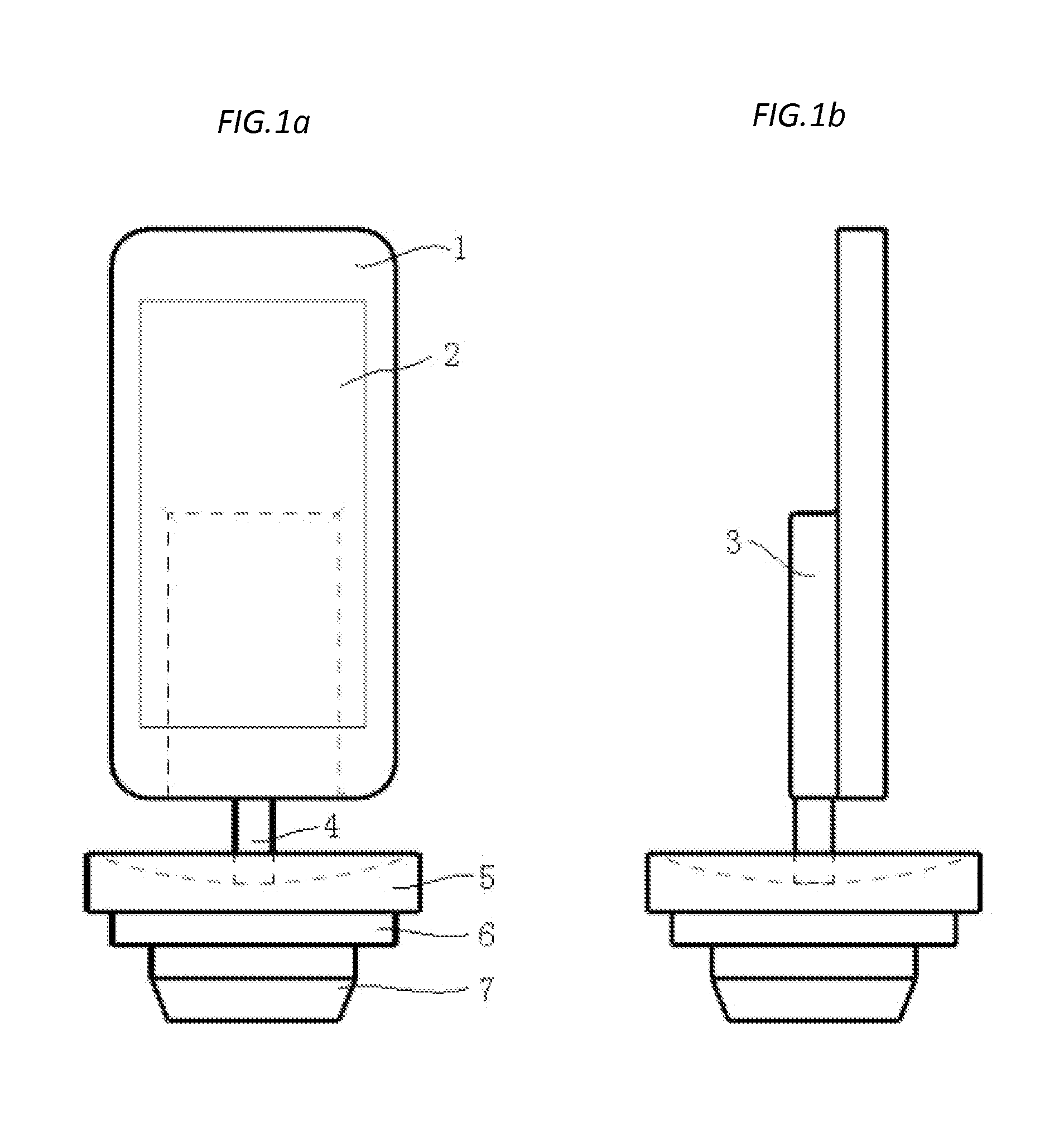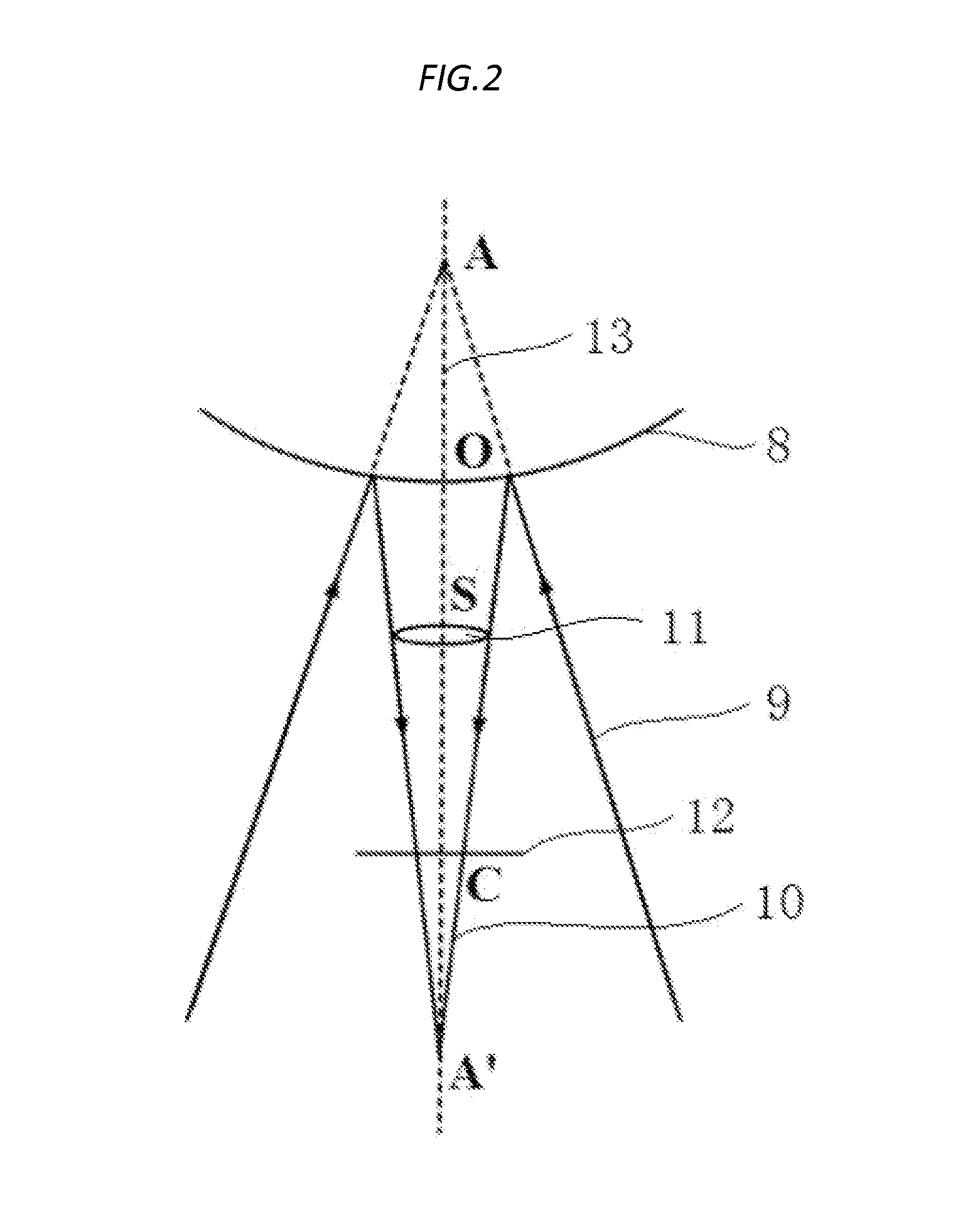Handheld apparatus for measuring lens surface power
a technology of surface power and hand-held apparatus, which is applied in the direction of instruments, structural/machine measurement, spectales/goggles, etc., can solve the problems of reprocessing lens, surface deformation, reprocessing failure, etc., and achieve the effect of reducing complexity, improving stability and reliability of the apparatus, and minimizing the volume of the optical measurement head
- Summary
- Abstract
- Description
- Claims
- Application Information
AI Technical Summary
Benefits of technology
Problems solved by technology
Method used
Image
Examples
Embodiment Construction
[0019]FIG. 1a and FIG. 1b show a handheld measurement apparatus according to one embodiment of the present invention, and is respectively a front view and a left-side view of the measurement apparatus in working status. As shown in FIG. 1a and FIG. 1b, the handheld measurement apparatus includes a data processing unit (here we call it a smartphone) such as smart mobile phone 1 as the main control body and an optical measurement head 3 which is fixed on the back side of the smart mobile phone 1. During Rx production, an ophthalmic lens blank or mold 5 is blocked on a chuck 7 via alloy or wax 6. The surface generating machine and polishing machine clamp the chuck 7 on their work piece spindle and process the top surface of the lens blank or mold 5. After polishing, the lens or mold 5 blocked on the chuck 7 is placed against the lens support 4 of the measurement head 3 and the local optical surface power, e.g., spherical power, cylinder power and cylinder axis, of the small surface are...
PUM
 Login to View More
Login to View More Abstract
Description
Claims
Application Information
 Login to View More
Login to View More - R&D
- Intellectual Property
- Life Sciences
- Materials
- Tech Scout
- Unparalleled Data Quality
- Higher Quality Content
- 60% Fewer Hallucinations
Browse by: Latest US Patents, China's latest patents, Technical Efficacy Thesaurus, Application Domain, Technology Topic, Popular Technical Reports.
© 2025 PatSnap. All rights reserved.Legal|Privacy policy|Modern Slavery Act Transparency Statement|Sitemap|About US| Contact US: help@patsnap.com



